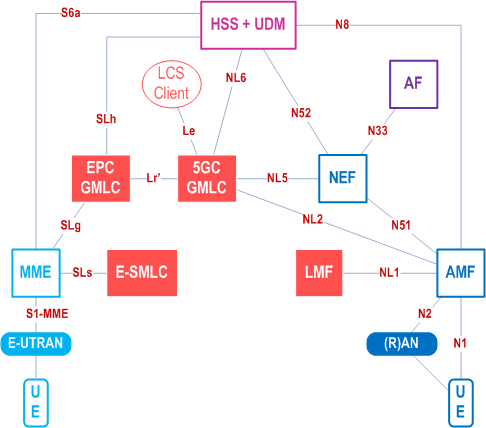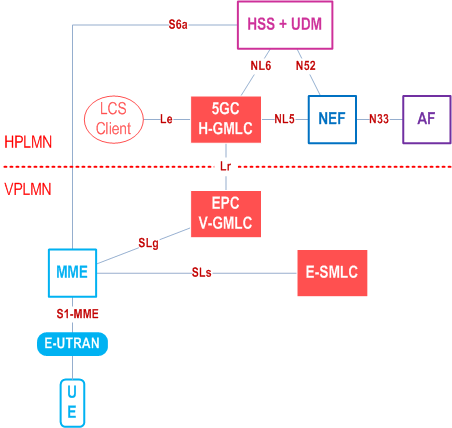Content for TS 23.273 Word version: 19.1.0
1…
4…
4.2…
4.2a…
4.3…
5…
5.5…
6…
6.1.2
6.1.3
6.1.4…
6.2
6.3…
6.3.2…
6.4
6.5…
6.7…
6.7.3
6.7.4
6.7.5
6.8
6.9…
6.10…
6.11…
6.12…
6.13…
6.14…
6.15…
6.16…
6.17…
6.18…
6.19…
6.19.2…
6.20…
6.20.4…
6.21…
7…
8…
A…
B…
C…
4.2a Interconnection between 5GC and EPC
4.2a.1 General
4.2a.2 Non-roaming architecture
4.2a.3 Roaming architecture
4.2b Positioning methods
...
...
4.2a Interconnection between 5GC and EPC p. 20
4.2a.1 General p. 20
For MT-LR Location Request, when a LCS service request is received at 5GC GMLC, the target UE may be served by either 5GC or EPC. An EPC/5GC common interface is used between the LCS Client and the 5GC GMLC to enable the location service request being handled based on whether the target UE is served by EPC or 5GC. The AF initiates the service request to the 5GC GMLC via NEF.
For MT-LR Location Request, the 5GC interconnection with EPC happens:
- when an LCS service request is received by the 5GC GMLC and the target UE is served by EPC in non-roaming case;
- when an LCS request is received by the 5GC GMLC in the HPLMN of the target UE and the target UE is served by EPC in the VPLMN in roaming case.
4.2a.2 Non-roaming architecture p. 20
Figure 4.2a.2-1 represents the non-roaming architecture of Location Services for interconnection between 5GC and EPC.

4.2a.3 Roaming architecture p. 21
Figure 4.2a.3-1 and Figure 4.2a.3-2 represent the Roaming architecture of interconnection between 5GC and EPC.


4.2b Positioning methods p. 22
The LCS feature utilises one or more positioning methods in order to determine the location of user equipment (UE). The positioning methods may use a trained ML Model available at the LMF.
Determining the position of a UE involves two main steps:
- Radio signal measurements or non-RAT measurements; and
- Position estimate computation based on the measurements.